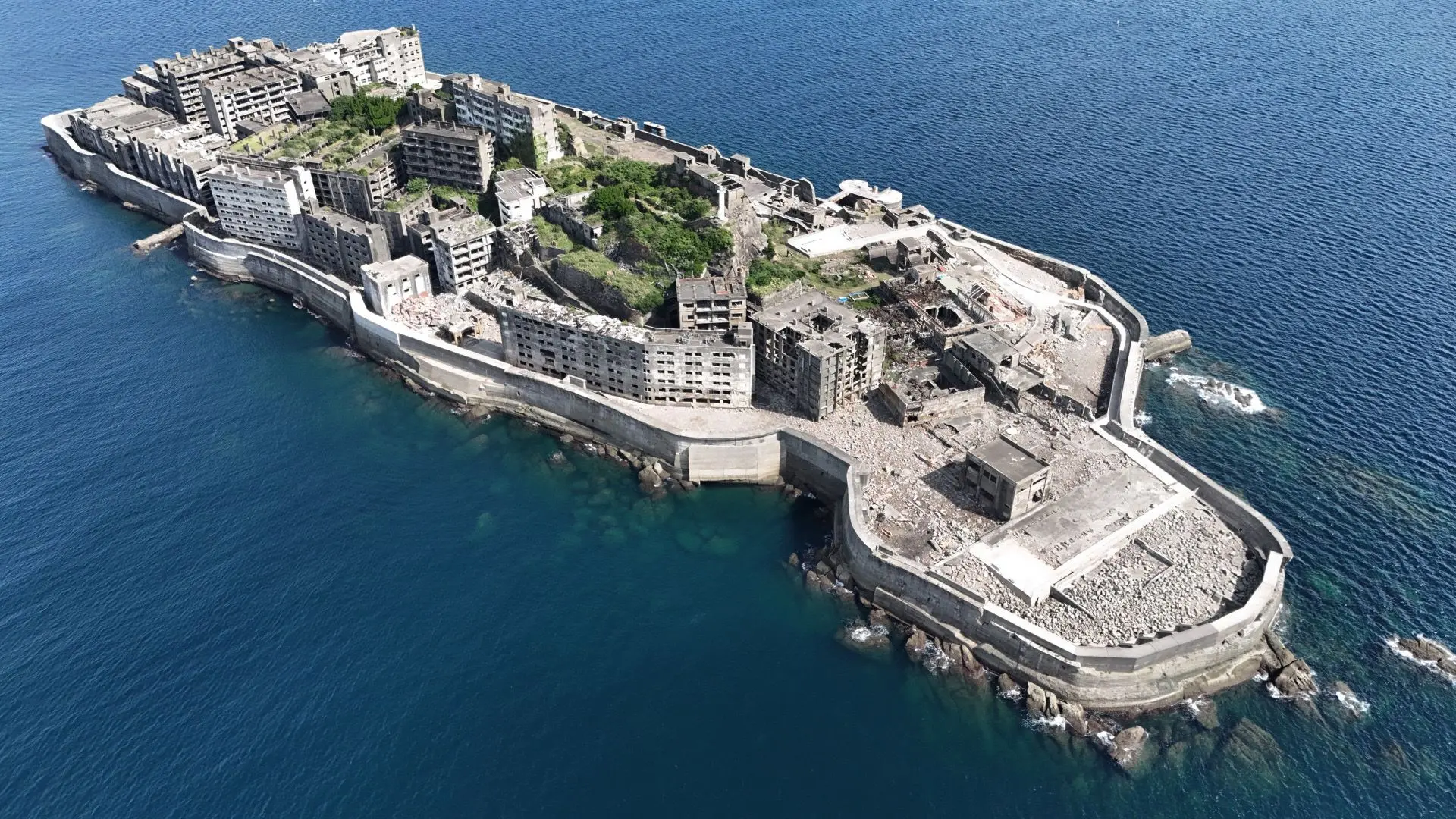Japan’s Top 5 Dark Tourism Spots — A Journey Into Shadows That Must Not Be Forgotten

History isn’t always told in places bathed in light.
Sometimes, it lies hidden in forgotten buildings and weathered landscapes—where the quiet truth of Japan still lingers.
Places where people once lived and left behind nothing but the slow passage of time.
This isn’t a trip for fun or photo ops.
But it’s the kind of journey that stays with you.
That’s the draw of dark tourism.
RAW JAPAN presents five powerful sites across Japan where echoes of the past remain.
From scars of tragedy to the stillness of ruins, these destinations guide you through another way to explore Japan—by listening to the voices etched into the land.
This is a different kind of journey—one that follows shadows instead of spotlights.
Where traces of life, labor, and even despair remain quietly preserved.
Join us as we explore RAW JAPAN’s picks for the Top 5 Dark Tourism Spots in Japan —
where ruins, submersion, and memory turn travel into reflection.
1. Gunkanjima (Nagasaki)
Also known as “Battleship Island,” Hashima was once a thriving coal-mining city that powered Japan’s modernization.
At its peak, over 5,000 people lived on this small island—complete with schools, cinemas, and hospitals.
But after the mine closed, everyone left.
Now, only crumbling concrete remains.
Today, you can visit via guided tours only.
While entering buildings is prohibited, the air of this collapsing island holds a silent, indescribable weight.
⚠️ Note: Landings are frequently canceled due to weather—book multiple date options.
Official site: https://www.gunkanjima-concierge.com/
2. Yubetsu Coal Mine Ruins (Hokkaido)
Deep in the mountains of Kushiro, Hokkaido lies the vanished mining town of Yubetsu, once home to over 10,000 people.
Now it’s nothing but ruins—schools, hospitals, and shrines overtaken by forest like something out of a jungle.
Its “suddenly abandoned” atmosphere draws urban explorers and history fans alike.
⚠️ Note: Many areas are restricted. Exploring on your own is dangerous. A local guide is essential.
Reference: https://note.com/akan_kurashi/n/n420d6abd9a57
3. Submerged Village of Ogouchi Dam (Tokyo)
In the Okutama region of Tokyo lies a dam with a sunken past.
The Ogouchi Dam is a key water source for the Tokyo area—but its creation forced over 500 households to give up their homes.
The village beneath the reservoir lives on through monuments, museums, and testimonies of those who once lived there.
A visit offers a chance to reflect on lives sacrificed for the comforts of today.
⚠️ Note: The lakeside area is accessible, but the submerged village itself is not visible. Research before visiting adds deeper meaning.
Reference: https://www.waterworks.metro.tokyo.lg.jp/suigen/antei/ogochi
4. Manda Pit (Miike Coal Mine, Kumamoto)
Now a UNESCO World Heritage Site, the Manda Pit of the Miike Coal Mine seems like a pristine industrial relic.
But beneath its towers and winding gear lie stories of harsh labor, forced prison work, and fatal coal dust explosions.
Its grand, brick architecture holds both beauty and sorrow.
⚠️ Note: Join a guided tour to understand the full historical context. This site is more than a photo—it’s a lesson.
Official site: https://kumamoto.guide/spots/detail/12133
5. Matsuo Mine Ruins (Iwate)
Hidden 1,000 meters up in the mountains of Hachimantai, Iwate, the Matsuo Mine Ruins are all that’s left of what was once the largest sulfur mine in the East.
The remains of worker housing still cling to the mountainside—massive, decaying apartments, abandoned bathhouses, staircases buried in rubble.
It’s been dubbed “Japan’s Laputa” for its haunting, dreamlike beauty.
But this place is more than a ruin.
It’s a silent warning of what happens when humans misjudge their place in nature.
⚠️ Note: Some areas are off-limits. Never enter without permission. Distant observation and licensed drone use are possible with approval.
Reference: http://www.bunka.pref.iwate.jp/en/archive/cs27
RAW JAPAN Comment
All five sites share one purpose: to remember.
This is not a photo stop.
It’s about pausing, reflecting, and truly seeing.
This is not sightseeing—
It’s a new kind of travel: walking through memory.
To shine a light on what’s been forgotten.
To listen to voices on the verge of vanishing.
It’s about confronting history—and quietly connecting with yourself.
So, if you’re looking for your next destination—
Let it be somewhere deeper than any map.
⚠️ Please note: Many of these locations are still deteriorating or tied to disasters and trauma. Follow all safety guidelines, obey local rules, and travel with respect.
Some areas are off-limits, sacred, or dangerous.
Thoughtless behavior can hurt those who still carry the emotional weight of these places.
This is not a trip to look at something.
It’s a journey to face it.
Obsessed with Japan’s quirks, and a father of two. I hunt for those subtle, “wait, what?” moments that hide in everyday life.
